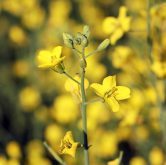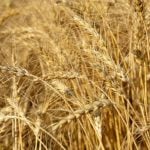MarketsFarm — While global fertilizer prices were projected to be steady to higher in 2024, overall affordability is set to improve while usage will increase, according to one analyst.
Samuel Taylor, a New York City-based farm inputs analyst for RaboResearch Food and AgriBusiness, delivered a presentation on the fertilizer market during the firm’s Fall Harvest Outlook webinar on Oct. 25.
Taylor presented a fertilizer “affordability index” which is measured using global fertilizer prices against global crop prices with a baseline of zero. Last September, the value was 0.01, down from around 0.25 in July. By comparison, the index had fallen to minus 0.65 in Jan. 2022, its lowest value since the Great Recession of 2008. Despite this, the index, and the worldwide affordability of fertilizers, are expected to improve into July 2024.
Read Also

U.S. grains: Soybeans rise on China demand hopes; corn and wheat rebound
Chicago Board of Trade soybean, corn and wheat futures rose on Monday on signs of progress towards the end of a record-long U.S. government shutdown, along with expectations of a revival of U.S. soybean exports to China, analysts said.
Separated by fertilizer type, potash had the best affordability index value at 0.32 (historical average at 0.11) in September, followed by phosphates at 0.07 (average at 0.11) and nitrogen at minus 0.19 (average at minus 0.04). Taylor predicted global nitrogen prices to increase by more than five per cent, while global prices for potash and phosphates will remain virtually unchanged.
RaboResearch Food and AgriBusiness also estimated a three per cent year-by-year increase in global fertilizer usage in 2023 and further projected a five per cent rise in 2024.
“Since (the Russian invasion of Ukraine), we’ve seen a rationalization towards fundamentals. A lot of the price action was built on timing and also capacity of supply and demand,” Taylor explained. “There’s a little bit of clarity there and a little bit more re-establishment of supply chains.”
In North America, Taylor added that year-by-year, prices for ammonia will be down 50 per cent, potash retreating by 44 per cent and phosphates pulling back by more than 10 per cent. In addition, prices for herbicides will be cut 50 per cent, fungicides 40 per cent and insecticides 25 per cent.
“From a cost-structure standpoint, there are some positive elements that you can point to,” he said.
However, Taylor warned the ongoing Israel-Palestine conflict could cause additional issues. In 2021, Israel produced 3.96 million tonnes of potash and 1.07 million tonnes of phosphates — seven and two per cent of global market share, respectively.
“As far as we’re aware, (Israel is) functioning as normal,” Taylor added. “However, within the context of quite a large mobilization, there is the risk in the future that there could be some disruptions to logistics, to manufacturing. But there is nothing to report on (now).”
— Adam Peleshaty reports for MarketsFarm from Stonewall, Man.
















